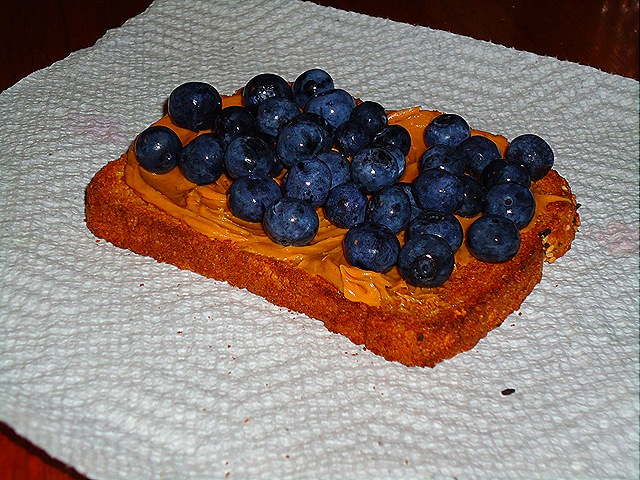Summer, summer, summer time means it’s time for harvesting fruits and veggies and berries. Just a week ago, some of my coworkers and I went on a quick hour long road trip to a farm just across Lake Pontchartrain—Blue Harvest Farms, where we were able to pick and eat bucket loads of plump, sweet, juicy, ripe blueberries.
As a kid, I always thought my grandpa owned his own farm and I knew what it was like to be on a farm, to pick fruits and vegetables, to husk corn and snap peas. Little as I was, those rows and rows of vegetables in the garden of his front yard hold no comparison to the rows and rows of blueberries at Blue Harvest.
Upon entering the farm, we were each given a one gallon bucket lined with a plastic bag and also offered a blue strap to clasp around the bucket handle. What a clever idea?!? As you can see, I opted for the strap; it was a great help to not have to hold the bucketful of berries and have two hands free for pickin’ and eatin’. There were also some signs showing a level $10 dollar gallon or a heaping $15 gallon.
I picked my $10 gallon but probably munched on the $5 heap as I walked the three designated rows tasting in search of that perfect tree that taste as sweet as honey. Once I found that tree I went to town loading my bucket then moving on in search of the next.
Along the way I happened to lose my $20 bill—perhaps pulling my iphone in and out of my pocket taking pictures. I began thinking to myself, “Now, I’m on a farm. Surely these are good, honest, hardworking people.” And lucky for me, they were. An unidentified lady, who I would’ve loved to thank and hug for that matter, turned my twenty into Mr. Farmer Man. I was so grateful.
After an hour or two of eating, sweating, and picking the girls and I finished filling up our buckets and headed to check out. I paid my $10.00 in exchange for my 8 pints of very selective, most plump, most sweet, blue berries.
To reach maximum ripeness, we were informed to spread the berries out on baking sheets and let them sit out 36 to 48 hours. So I did just that.
And ever since there has been much blueberry consumption on my part as evidenced in my—-well, let’s just be reminded that what goes in must come out (without being too graphic).
On bread with peanut butter.
In an oven baked blueberry crisp.
More oatmeal.
Mixed in with greek yogurt, granola, and milk.
And in dessert–A blueberry cream cheese with pecan crust. I completely forgot to take the final picture with a cool whip and pecan topping. Nor did I take a picture on Father’s Day when the family cut into it. Woopsy.
I still have about 8 or 9 cups of berries left in my freezer. Don’t worry, they will be consumed.
And a couple tips that I learned on the farm—
1. If you want to grow your own blueberries, you must plant at least two species of blueberries next to each other so they can cross-pollinate in order to grow. My husband planted one species in spring which sprouted slightly, but it has yet to produce anything. So take that as you wish.
2. If freezing the blueberries, do not rinse them until you are ready to use them. If you rinse prior to freezing they will become a mass of ice and you will not be able to use them.
If you are interested in picking your own blueberries, click here to find a farm near you. I had a great day doing something I’ve never done before. Do it if you get the chance, but only if you are not afraid of bugs or sweating.



















